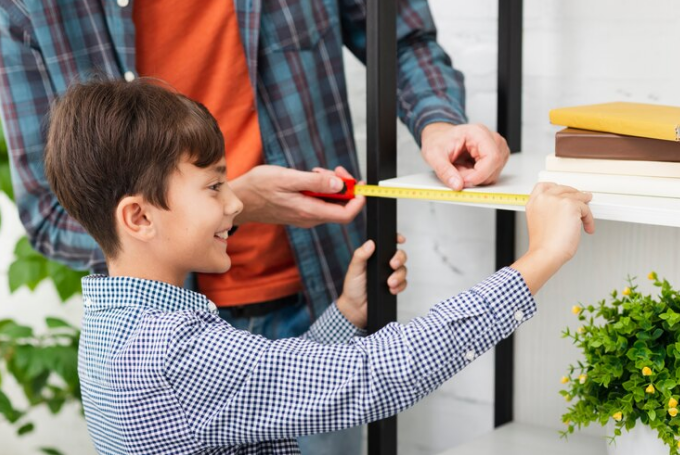Introduction
When kids are running around the house full of energy, protecting their curiosity becomes a top priority. Every year, a startling amount of children have accidents in the purported safety of their homes, many of which are avoidable. Among the many childproofing techniques, furniture straps are a crucial but frequently disregarded way to secure heavy and unstable furniture. This thorough tutorial explores the importance, choice, placement, and maintenance of child-proof furniture straps—a crucial yet easy step toward creating a safer space for our little explorers.
The Reason Behind Child Proofing
Children discover a whole new world in every nook of a home. Though vital for growth, their innate curiosity exposes them to hazards, particularly from furniture that could topple over. According to reports from the Consumer Product Safety Commission, children sustain injuries from falling furniture or televisions every thirty minutes. The need of protecting furniture at home is made clear by this concerning statistic. Due to their immature sense of danger and their voracious curiosity, children frequently climb or pull on furniture, which increases the risk of heavy objects toppling over. If not secured, bookcases, dressers, and TV stands may be dangerous.
Comprehending Furniture Straps
Furniture straps, which are intended to secure furniture to walls and avoid tip-over occurrences, are in the forefront of preventing such mishaps. These straps, also called anti-tip straps, are available in a variety of styles to accommodate different furniture kinds and weights, such as Velcro straps, metal brackets, and adjustable straps. Versatile and appropriate for a variety of furniture sizes are adjustable straps. On the other hand, metal brackets are stronger and better suited for larger objects like bookcases. Velcro straps work better on lightweight objects even though they are simpler to install. A major contributing aspect to these straps’ efficacy is their composition; the majority are compose of sturdy materials like metal, nylon, or heavy-duty plastic, which guarantees strength and longevity.
The Best Way to Select Furniture Straps
When choosing furniture straps, there are a few things to consider. Examine your home’s furniture first. Take into account each piece’s height and weight, as well as how frequently kids use or access it. For safe anchoring, larger, heavier furniture pieces like dressers and bookcases need stronger straps.The kind of strap is also very important. Metal brackets or adjustable straps made of durable materials are suggest for heavy furniture. Velcro straps may work well for lighter things. To make sure the straps can securely fasten your furniture, always verify their maximum weight capacity.
The straps’ certification and quality are other important factors to take into account. Seek for straps that are compose of sturdy, high-quality materials and that adhere to safety regulations. Purchasing straps with a good reputation and a track record of dependability is worthwhile. Recall that the safety it offers outweighs the strap’s little price.
The type, weight, and purpose of the furniture you’re securing must all be taken into account when selecting furniture straps. Bookshelves and dressers, for example, need furniture straps made of metal that are strong and durable, while lighter pieces may just require Velcro straps. Seek straps that are strong enough to hold the weight of your furniture and make sure they are composed of sturdy materials like premium metal or plastic. To make sure the straps complement the décor in your home, take into account the color and style of the straps as well. For a snug and secure fit, straps ought to be able to be adjusted.
Guide for Installation
Furniture strap installation is a simple procedure, but accuracy is required to guarantee success. First, assemble the required equipment, which usually include a screwdriver, drill, stud finder, and maybe a level. It’s crucial to follow the installation guidelines included with the straps because they may differ somewhat depending on the kind.
Finding your wall’s studs is the first step in installation because it is unsafe to fasten the straps straight into drywall. Use a stud finder to accomplish this. After locating the studs, mark the locations of the screws on the wall and the furniture by aligning the straps with the furniture.
Make sure the furniture is level and near its final location when installation. Put the strap’s other end to the furniture after fastening the first end to the wall at the stud. Take care to avoid overtightening and breaking the furniture. It’s best to use two straps for heavier goods to increase security.Finally, use a little pressure to see if the furniture is stable. It ought to feel securely fixed to the wall. If not, make the appropriate strap adjustments.
The efficacy of furniture straps depends on proper installation. To ensure that the straps can support the weight of the furniture, start by using a stud finder to locate the wall studs. On the wall and in the furniture, mark the drill points. Drill pilot holes, then fasten the strap’s ends to the furniture and the wall, respectively. Verify that the furniture is stable and that the straps are taut. To uniformly distribute the weight of heavy things, it is suggest to use two straps at different heights.
Upkeep and Frequent Inspections
Furniture straps require routine upkeep to guarantee their continued efficacy. Check the straps for wear or damage at least once every six months. Verify that all of the fasteners are secure and that the strap material is not deteriorating or fraying.
Your childproofing strategies may need to be reviewed as your kids get older and their skills develop. This could entail moving the furniture around, changing the straps that are currently being used, or adding more safety precautions.
Change the straps right away if you see any wear or damage. For the strap to effectively prevent accidents, its integrity is essential.
It’s crucial to give furniture straps regular upkeep. Every few months, make sure the straps are not worn out, loose, or broken. It’s vital to regularly tighten screws because they may come loose over time as a result of furniture shifting naturally. Furthermore, examine the straps for indications of deterioration like fraying or cracking, and replace them as necessary. As your child develops and becomes more mobile, it’s a good idea to reevaluate how your furniture is arranged to make sure all heavy items are kept firmly in place.
Extra Advice on Childproofing
Furniture straps are an important component of childproofing, but there is more to it than just using furniture straps to keep kids safe at home. Securing windows and doors, employing corner guards to shield against sharp edges, and keeping potentially harmful objects out of children’s reach are other crucial precautions. Keeping your house secure requires you to regularly assess its safety precautions as your child grows and matures.
Apart from the furniture straps, there exist additional crucial childproofing precautions that need to be taken into account. To keep dangerous locations off limits, fasten loose cables and wires, and make sure big items like TVs are securely placed, use safety gates. Install corner guards on sharp furniture edges, and fasten locks or latches to cupboards and drawers for security. Check your house frequently for possible risks and make necessary improvements as your youngster grows and explores new places.
Conclusion
In conclusion, one of the most important steps in giving your child a safe environment is childproofing it with furniture straps. You can greatly lower the possibility of mishaps involving furniture by selecting the appropriate straps, correctly installing them, and carrying out routine maintenance. Recall that childproofing is a continuous process that changes as your child does. To safeguard your child’s safety and your own peace of mind, be watchful and proactive in identifying possible hazards in your house.
We hope you found this information helpful in your journey to create a safer environment for your family. At GuardWell Safety, we understand that every home is unique, and so are your child-proofing needs. That’s why we offer a free Child-Proofing Consultation tailored to your specific requirements. Let our experts help you identify potential hazards and provide personalized solutions to make your home a secure haven for your little ones. Book your free consultation today and take the first step towards peace of mind.






